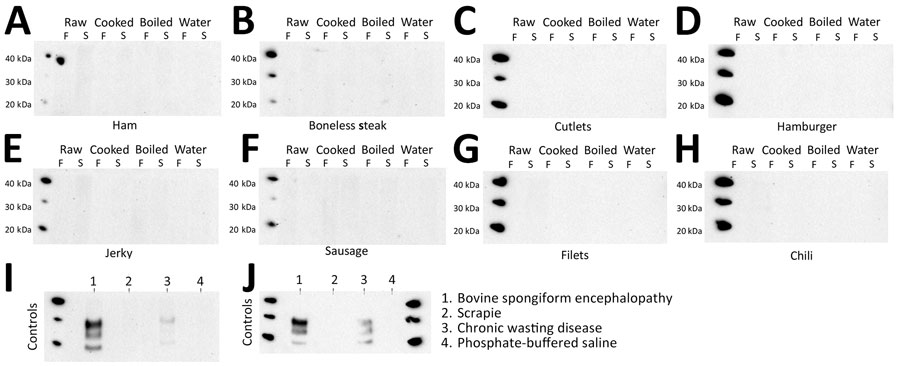Volume 31, Number 2—February 2025
Dispatch
Detection of Chronic Wasting Disease Prions in Raw, Processed, and Cooked Elk Meat, Texas, USA
Figure 3

Figure 3. Western blot of PMCA to evaluate zoonotic potential of CWD-containing meats in a study of chronic wasting disease prions in raw, processed, and cooked elk meat. A) Ham; B) boneless steak; C) cutlets; D) hamburger; E) jerky; F) sausage; G) filets; H) chili meat; I) positive control; J) negative control. We evaluated raw, processed, and cooked meat from a CWD-positive elk for the ability to misfold the human prion protein in a single PMCA round. All samples were treated with proteinase K. The analysis depicts samples frozen before PMCA, or sonicated and submitted to PMCA. PBS and scrapie prions were used as negative controls for human PMCA reactions, and BSE and an elk CWD isolates were used as positive controls. Numbers at the left depict molecular weight markers. BSE, bovine spongiform encephalopathy; CWD, chronic wasting disease; F, frozen; PBS, phosphate-buffered saline; PMCA, protein misfolding cyclic amplification; S, sonicated.